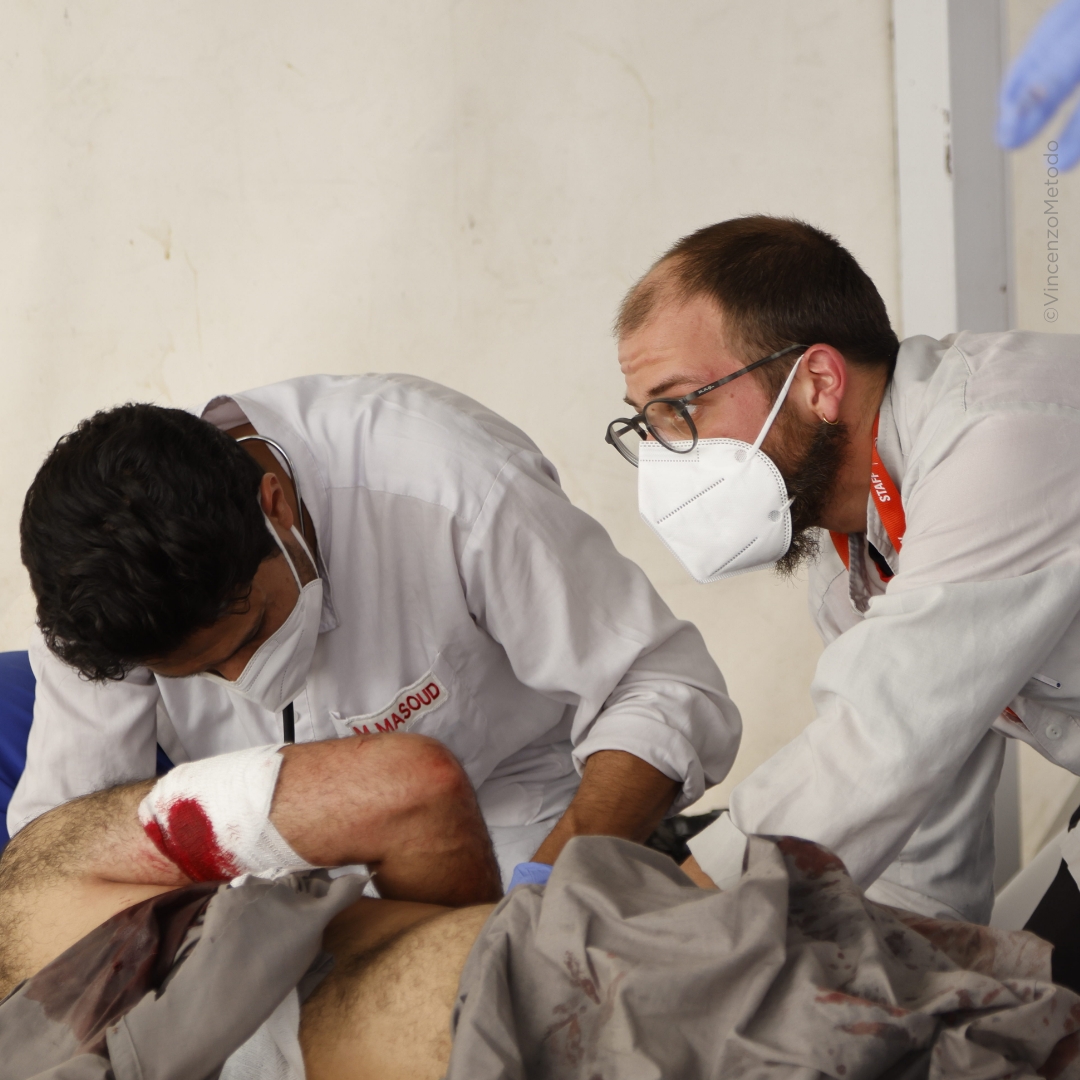In all of EMERGENCY's facilities around the world, we invest in women’s professional development -…

A View From Our Hospitals in Afghanistan.
We look after so many patients in Afghanistan: behind every wound lies the story of a country torn apart by years, decades of war.
Since August 2021, the national economy has suffered a heavy shock: international sanctions, the prolonged freezing of Afghan reserves, and the collapse of the banking and financial system have thrown the country into an unprecedented humanitarian crisis.
Needs, including health needs, are extreme, especially in displaced communities: there are shortages of food, water, and medicine, and natural disasters such as the earthquake that struck the country in June have posed yet another challenge for many families.
Almost half of Afghanistan’s population now lives below the poverty line.
Over 23 million people are suffering from food insecurity.
The resilience of the Afghan public health system is compromised. The country faces enormous challenges in ensuring basic health care. Staff in Afghan hospitals have not received their salaries for months. And there is a shortage of drugs and equipment in the clinics on the ground
Dr Faizel, EMERGENCY’s surgeon
One year ago, EMERGENCY’s president Rossella Miccio stated:
Fortunately we can count on very committed staff who have been working with us for years. There are over 1,300 Afghans working for EMERGENCY. All the surgeons in Kabul are from Afghanistan, trained by us, and who have been operating on thousands of their compatriots over the years. Their colleagues who had already finished their shifts went straight back to the hospital to help.
Our healthcare network has never stopped
Since August 2021, our three hospitals across the country (Kabul, Lashkar-Gah and Anabah), have made over 21,000 admissions, together with over 360,000 examinations in more than 40 First Aid Posts and Primary Healthcare Centres.
In Kabul, over 90% of admitted patients have violent injuries, mostly caused by firearms but also mines, unexploded ordnance and knives.

Photo ©️ Vincenzo Metodo
At the age of 17, Faizullah and his father were wounded by a gunman on a motorbike who was trying to steal money from them. Faizullah’s brother drove them both to our hospital. After being wounded, “witnesses told me to go to EMERGENCY for help,” the boy tells us.
By the time they arrived at the hospital, Faizullah’s leg had lost a lot of blood. Immediate transfer to the operating theatre allowed him to recover.
Despite a significant reduction in armed violence, civilian casualties are still proof that the country is far from becoming a safe and stable place.
This is also demonstrated by the 23 mass casualty incidents in Kabul that our Surgical Centre has handled since the beginning of the year. Mass casualty incidents are often the result of attacks targeting places of prayer, education and other gatherings.
Taher, 69, was on a bus home after work when there was an explosion. “At first, I did not realise that I was seriously injured,” he tells us. “I wanted to get out of the bus as quickly as possible to save myself.”
A taxi driver saw Taher, got him into his car, and drove him to our hospital. It took days before Taher could remember what had happened: he arrived in a very serious condition, spent more than 20 days in intensive care, and is only now beginning to recover. He is aware that from now on life will present him with many difficulties, but he still has confidence and optimism for the future. From his bed in our Surgical Centre, he confides that he feels as though he is amongst family in our hospital.
We reiterate: behind every wound lies the story of a country torn apart by war. Despite everything, this is a country that does not lose hope in imagining a different Afghanistan, where one can live in peace.

Despite uncertain times, one certainty is our unwavering commitment to providing free, quality healthcare to the Afghan people.⠀

In 2021, EMERGENCY released a multimedia project entitled Afghanistan20, which reflects on the conflict in Afghanistan between 2001-2021 from the perspective of its victims and those treating them. Bringing together data from the organisation’s healthcare network across the country, testimonies from staff and patients, as well as contributions by journalists, researchers, and analysts, the project provides a vivid account of this chapter of the war in Afghanistan.
AFGHANISTAN20 sheds light on:
- An unrelenting conflict with thousands of civilians killed and injured.
- The devastating impact of airstrikes, landmines and IEDs.
- The dangers faced by Afghan women and children.
- A healthcare system on the verge of collapse.
- Over 135,000 surgical operations performed by our staff.
- 136 mass casualties managed by our Kabul Hospital from January 2013 to December 2020.




